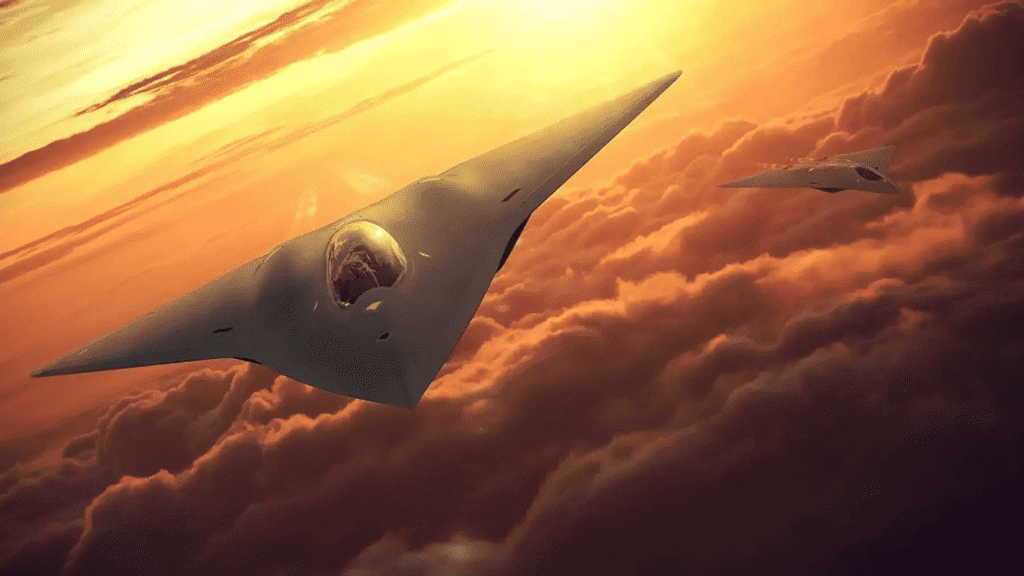Lockheed Martin has released new artwork depicting a purely theoretical manned sixth-generation combat aircraft component of the Next Generation Air Dominance, or NGAD, the multi-faceted US effort to field next-generation tactical air combat capabilities. The stealthy tailless aircraft is shown refuelling from Lockheed’s LMXT tanker concept, which was the primary focus of the artwork.
Lockheed Martin’s concept for a manned NGAD aircraft includes a diamond-shaped wing with straight leading and trailing edges. The wing is seamlessly integrated into the elongated fuselage, which has a single prominent chine line and tapers sharply toward the nose. It’s worth noting that the aircraft lacks distinct tail surfaces.

Tailless designs have frequently appeared in NGAD-related concept art due to their low observability, large internal volume for fuel, weapons, and sensors, and high efficiency.
The twin engines are buried in the fuselage and exhaust through two-dimensional diamond-shaped nozzles on the upper surfaces of the airframe. These are particularly visible in a rear-aspect view of the aircraft, which also shows taking on fuel from an LMXT.

Two fairly shallow ‘bulges’ appear on either side of the fuselage’s center section, which seems to be related to the propulsion system. In addition, the aircraft could be depicted as having a shiny or semi-reflective coating, similar to the experimental coatings seen on F-22s, F-35s, and F-117s in recent times.
As seen in previous sixth-generation concepts, the engine air intakes are not visible, implying that they are mounted beneath the airframe.

Furthermore, the cockpit canopy is significantly low-profile, implying that the crew has limited visibility, particularly to the rear. Furthermore, the manned element of NGAD is not a traditional fighter. As a result, range, payload, and low observability will almost certainly take precedence over maneuverability.
It’s also worth noting how similar the latest renderings are to previous Lockheed Martin concept art below depicting an ostensibly hypothetical sixth-generation manned fighter. However, details appear to extend to smaller details, including certain panel lines, in addition to the same basic configuration.

The scale of the aircraft depicted in these new concept artworks is difficult to judge. However, those who have seen previous artists’ impressions of hypothetical manned NGAD aircraft from various manufacturers and the Air Force itself will recognize the concept.
Besides this, Air Force Secretary Kendall previously stated that the manned component of the NGAD program had entered an engineering, manufacturing, and development (EMD) phase to achieve operational capability by 2030. However, that declaration appears to have been revised, leaving the status of the program’s EMD stage kind of questionable. Regardless, the program is undoubtedly moving forward at a rapid pace, as the Air Force is under intense pressure from foreign competitors.
It will certainly be interesting to see how concepts for NGAD from Lockheed and other manufacturers continue to evolve as we move closer to the ‘reveal’ of what’s unquestionably one of the most hotly anticipated military aircraft of the century so far.


